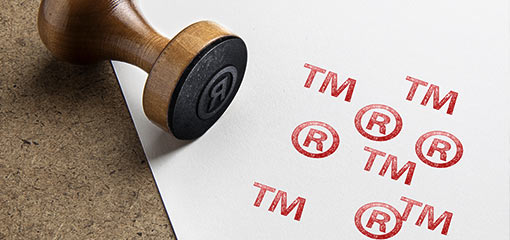This article is written by Divya Sampath who is pursuing a Certificate Course in Intellectual Property Law and Prosecution from LawSikho.
Table of Contents
Introduction
Any photograph, term, or emblem used to identify a company, service or product is a trademark logo. If it is for editorial or data purposes, such as when a logo is used in a published article or used as part of a comparative product statement, you need permission to use a logo.
Unless it is for editorial or content purposes, such as appearing in published documents, school textbooks etc., you need permission to use a logo. Apart from the above, a formal authorization from the owner must be received to use a trademark logo. An explanation of why you are demanding the use of the logo and how the logo will be used should be included in the written authorisation. Third parties should never use someone else’s logo without a licensed agreement, including program and corporate logos. Thus the use of Trademark logos is strictly regulated and any violation could lead to a possible infringement.
Companies grant permission to third parties in some cases by a formal agreement covering membership of the program, technical compatibility and business relationships, and it is called a logo program. Companies often have resale policies, which mean that it is almost difficult for a purchasing company to alter the company’s logo and thus the trademark identity is rather intrinsic to its commercial entity.
The reason why one needs to get permission to use a third party’s trademark logo is if they want to make or sell craft, for the purpose of promotion, advertising and marketing (except for editorial purpose), comparative advertising i.e. comparing one fast-food restaurant’s hamburger to another, falls under “fair use”. The other instances that fall under fair use include when the trademark logo is used to educate, inform, or express opinion, creation of trademark parodies for non-commercial use or for the purpose of storytelling without the including it for the purpose of product placement.
Obtaining permission to use a trademark Logo in India
In India, licensing of a trademark is the manner in which a licenced proprietor of a trademark authorises a third party to use the trademark in the course of trade without having to transfer possession of the trademark, which is a legal way of obtaining ‘permission’. Trademark licencing requires the licenced proprietor to allow anyone to use the mark without actually allocating its ownership. In the Trademarks Act, 1999, the word ‘licence’ or ‘licencing’ is nowhere to be found, however, Sections 48-55 of the Act include the definition and the laws regulating the licencing of trademarks.
“The word “licenced customer” in the Act can be said to be synonymous with the term “licensee”. The ‘permitted use,’ as described in Section 2(1)(r) of the 1999 Act, means the use by a third party of a registered trademark as a registered user, as well as the use by a third person with the mere consent of the registered proprietor. It is evident from the usage of the word ‘can’ in Section 48(1) of the Act that registration of a licencing agreement is not necessary for it to be licenced. The agreement, however, must be in writing as oral licensing is no licensing.
In India, if a trademark is used for commercial gain without seeking prior approval, then it is considered an infringement of the Trademark. Infringement of a trademark happens if the trademark used by a person is similar or identical to the trademark rights of another person or corporation within the jurisdiction.
(a) a close similarity of a trademark and its related goods and/or services to a previously licenced trademark and its related goods and/or services; and/or
(b) use of a mark that creates a possibility of misunderstanding among the related customers with a previously registered trademark. When proving a trademark infringement, proving that the infringer of a trademark is a competitor with similar products or services can be beneficial for the registered trademark owner.
If any person falsely claims that a registered trademark is registered in respect of any products or services which are in fact not registered, he/she shall be punishable by imprisonment for a period of up to three years, or by a fine, or both.
Obtaining permission to use a trademark logo in the USA
A trademark’s primary function is to prevent third parties from using the logo without authorization, thus it is important to use trademark logo with permission or approval of the owner. The Lanham Act in the United States allows a non-owner of a licenced trademark to make “fair use” of the trademark without permission. However, since the Act provides protection to non-registered trademarks as well it is imperative to take permission by identifying the owner of the trademark, identify the rights you need to request, contact the owner with a description of your intended use and negotiate the required payment, receive the trademark permission of use in writing.
Additionally, Trademark approval, also known as licencing, exists for the purpose of allowing anyone to use a trademark, term or logo that marks only one person or organisation as the source of a product or service. The trademark owner may take advantage of these benefits when granting proper permission in the form of income for any item sold under a trademark agreement or a flat fee for the use of the trademark. People or businesses who want to legally use a trademark may receive the permission for free or at a cost, which is most likely.
Trademark approval may occur when a trademark protection company files but is refused because the mark is too close to an established trademark. The person or business that has applied for the trademark may request permission to use the trademark already registered in the registry.
The Lanham Act is the statute that governs federal trademark law to a large degree. Certain uses of trademarks are allowed by one clause of the law. Under 15 U.S.C. § 1115(b)(4), a variety of protections can be claimed against a trademark infringement, the most important being if the use of a trademark does not necessarily qualify as an infringement if the user is not actually using the trademark as a mark.
However, any lies associated with your use of a competitor’s trademark could subject you up to a claim of trademark infringement or disparagement. Assuming that your statements about a competitor are true, however, trademark law does provide some degree of leeway to use registered marks, even without permission in the USA. Trademark infringement penalties can vary from case to case, depending on how deeply a trademark has been broken.
An injunction or a cease and desist letter directing the infringer to avoid using the trademarked content is the most common punishment for trademark infringement. Judicial or civil fines may also be levied as a result of a deliberate breach of trademark law. Trademarks are not enforced by the USPTO (United States Patent and Trademark Office) and, sadly, these labels are not self-enforcing either. A trademark owner who wishes to protect their rights must track their mark constantly to ensure that it is not used by third parties.
Conclusion
In India, the parameters to obtain permission to use a trademark are far stricter than in the USA. In the US, a trademark logo under the Lanham Act can be used for anything except for commercial purpose, in India although it is the same, there is a dire need in most cases for the Trademark user to obtain in writing permission from the rightful owner. In certain situations, if a trademark is being used for commercial gain, in India then the trademark logo has to be licensed or assigned from the owner of the Trademark.
Since there are logo programs and resale policies that use of a trademark is subjected to companies, it is always advisable to obtain written permission from the rightful owner of the trademark by identifying the owner of the trademark logo and identifying which rights you need to request, contact the owner with a description of your intended use and negotiate the required payment, if any and have the permission written in the form of a legal document to make it enforceable.
Students of Lawsikho courses regularly produce writing assignments and work on practical exercises as a part of their coursework and develop themselves in real-life practical skill.
LawSikho has created a telegram group for exchanging legal knowledge, referrals and various opportunities. You can click on this link and join:












